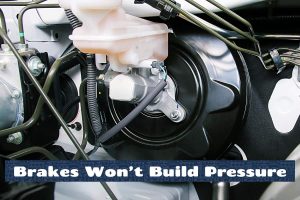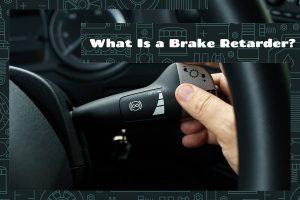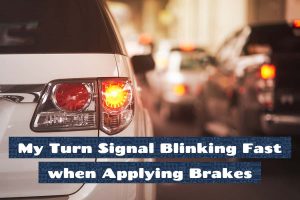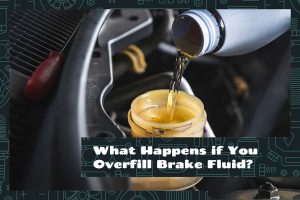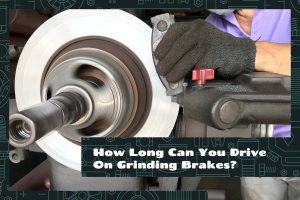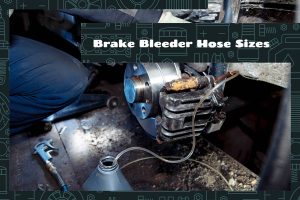Electronic parking brakes, often hailed as a revolutionary piece of automotive technology, offer a more efficient, user-friendly alternative to traditional handbrake or foot-operated systems.
As part of a vehicle’s intricate braking system, they provide essential parking and emergency stop support. Enabled by the press of a button, these systems use electric motors to engage the brakes, offering precision and automation that old systems lack.
Common electronic parking brake problems are as follows:
- Stuck or frozen brakes
- Brakes not holding the vehicle
- Failure to release
- Warning light or error messages on the dashboard
This guide will cover the heart of these issues, exploring their causes, signs, and solutions. We’ll also discuss how to maintain electronic parking brakes to prevent these problems and maximize their lifespan.
Introduction to Electronic Parking Brakes
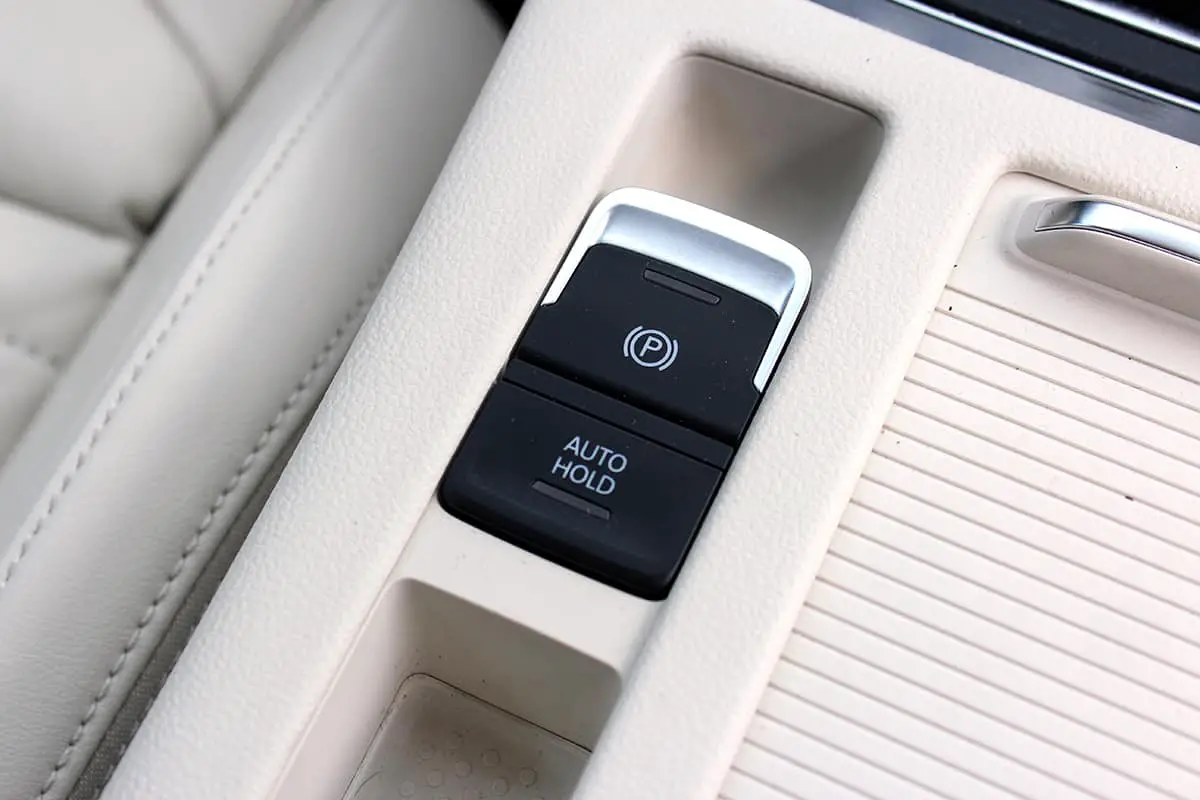
The automobile industry has seen countless innovations over the years, one of which is the transition from manual to electronic parking brakes. This technology, designed to hold the vehicle stationary, has significantly improved the ease and effectiveness of parking brakes in modern cars.
What is an Electronic Parking Brake?
An Electronic Parking Brake (EPB), often referred to as an electric or electronic handbrake, is a type of brake that operates on the principles of electromechanics. Unlike traditional hand or foot-operated parking brakes that utilize a lever or pedal, the EPB is engaged or disengaged by simply pressing a button.
This advanced technology is quickly becoming the standard in new vehicles due to its efficiency, reliability, and simplicity. It not only reduces the physical effort required to apply a parking brake but also provides additional safety features, such as automatic engagement and hill-hold control.
How Does an Electronic Parking Brake Work?
The working principle of electronic parking brakes is relatively straightforward yet technically advanced. When you push the EPB button in your car, it sends an electrical signal to the Electronic Control Unit (ECU), which is essentially the car’s computer. The ECU, in turn, operates electric motors at each wheel to apply or release the brakes.
When you press the button to apply the parking brake, the electric motor pushes the brake calipers or activates the brake drums to clamp onto the brake disc, thereby stopping the vehicle. Conversely, pressing the button to release the brake causes the electric motor to retract the calipers or disengage the brake drums, freeing the vehicle to move.
Common Electronic Parking Brake Problems
Despite the reliability and convenience of electronic parking brakes, they are not immune to issues. Here, we’ll cover common problems and their symptoms.
1. Stuck or Frozen Electronic Parking Brake
One of the most common problems with electronic parking brakes is them getting stuck or frozen, especially in cold weather conditions. In such cases, the brake fails to release even after pressing the release button, leaving the vehicle immobilized.
Symptoms:
- The vehicle doesn’t move even when the gear is in drive mode.
- The dashboard displays a warning light or a ‘parking brake error’ message.
- You may hear a continuous whirring sound from the brake motors, indicating they’re trying to release the brake.
2. Electronic Parking Brake Not Holding
An equally critical issue occurs when the parking brake fails to hold the vehicle stationary. This typically happens due to a malfunction in the brake motor or the control unit.
Symptoms:
- The vehicle moves or rolls away when parked, especially on a slope.
- The dashboard may display a ‘parking brake failure’ message.
- An absence of the usual sound that the brake motors make when the parking brake is applied.
3. Electronic Parking Brake Not Releasing
If your electronic parking brake is not releasing, it could indicate a problem with the brake motors, wiring, or the electronic control unit. This issue can be a serious safety hazard, as driving with the parking brake engaged can damage the braking system.
Symptoms:
- The vehicle struggles to move or accelerates slower than usual.
- You may smell burning or notice smoke coming from the wheel area due to excessive heat generation from the brakes.
- The brake warning light on the dashboard remains on even after you’ve attempted to release the brake.
4. Dashboard Warning Lights and Messages
Modern vehicles are equipped with various sensors that monitor the condition of the car’s systems, including the electronic parking brake. These sensors communicate with the ECU, which then triggers a warning light or message on the dashboard if there’s a problem.
Symptoms:
- A warning light on the dashboard is typically depicted as a red or yellow circle with an exclamation mark or a ‘P’ symbol.
- Messages like ‘parking brake error’, ‘parking brake failure’, or ‘check parking brake’ appear on the dashboard.
- The warning light or message doesn’t go off even after the parking brake is released.
Causes of Electronic Parking Brake Problems
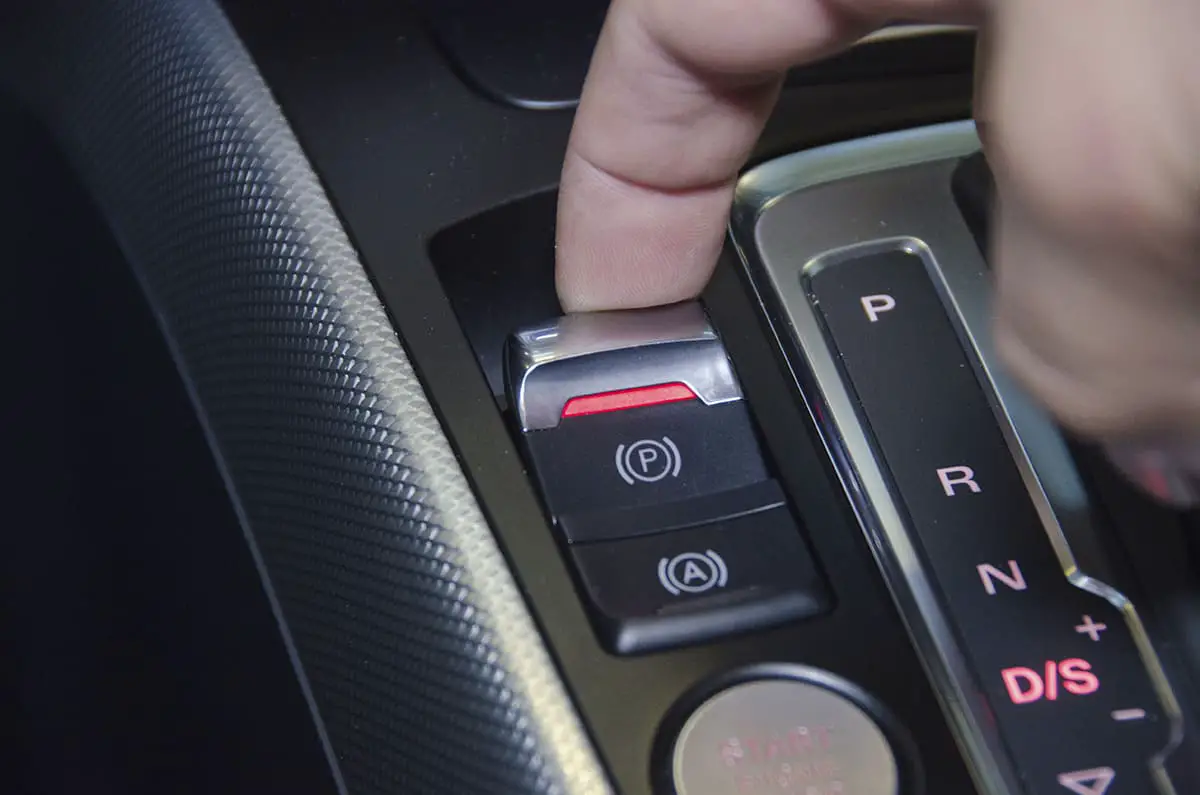
While electronic parking brakes are designed to provide reliable performance, they can still encounter issues due to various reasons.
1. Mechanical Issues
Mechanical wear and tear are natural parts of any vehicle’s lifecycle, and the electronic parking brake system is no exception. Over time, mechanical components can degrade, affecting the overall function of the system.
Common causes:
- The brake pads and discs wear down, leading to decreased braking efficiency. This wear can cause the electronic parking brake to not hold the vehicle effectively.
- Brake calipers can stick or seize due to corrosion or dirt buildup, leading to the parking brake getting stuck or not releasing.
2. Electrical Issues
The electronic parking brake relies on electrical signals to operate. Therefore, any issue with the electrical system can directly impact its performance.
Common causes:
- Faulty, frayed, or disconnected wiring can interrupt the electrical signals, leading to problems like the parking brake not releasing or applying.
- If the fuse or relay responsible for the electronic parking brake system blows or malfunctions, it can prevent the system from operating correctly.
3. Software Issues
The electronic parking brake system is controlled by software that communicates with various parts of the vehicle. Issues with this software can result in malfunctions.
Common causes:
- Outdated or corrupt firmware can cause the electronic parking brake to act unpredictably or malfunction.
- Incorrect calibration of the parking brake system can cause issues like the brake not holding the vehicle or not releasing completely.
4. Environmental Factors
External factors, such as extreme weather conditions, can also cause issues with the electronic parking brake system.
Common causes:
- In extremely cold weather, the parking brake can freeze, preventing it from releasing.
- High temperatures and humidity can lead to corrosion of the electrical components or brake parts, leading to malfunctions.
Fixing Electronic Parking Brake Problems
Depending on the cause and severity of the problem, solutions may range from simple DIY fixes to professional assistance.
DIY Fixes
- Resetting the system: Sometimes, a simple system reset can fix problems. This can often be achieved by turning the vehicle off and on again.
- Thawing frozen brakes: If your brakes are frozen, moving your car to a warmer place, if possible, can help thaw them out.
- Inspecting and cleaning: Regularly inspecting the components for visible signs of wear, corrosion, or dirt, and cleaning them can prevent issues.
Professional Repairs
- Brake pad or disc replacement: If the brake pads or discs are worn, a professional can replace them.
- Electrical repairs: If the problem lies in the wiring or circuits, a technician can diagnose and fix these issues.
- Software updates: If the issue is software-related, updating the firmware or recalibrating the system can often resolve it.
Replacement
- Brake motor replacement: If the brake motor is faulty, it may need to be replaced.
- Brake caliper replacement: If the brake calipers are stuck or seized, a replacement may be necessary.
- Complete system replacement: In rare cases, if the system has a major defect or severe damage, a complete replacement may be required.

